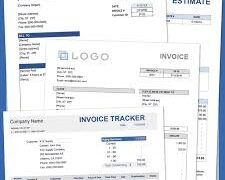In today’s fast-evolving pharmaceutical and nutraceutical industries, tablet production remains one of the most efficient and reliable dosage forms. From vitamins and herbal supplements to prescription medicines, tablets dominate global markets for their stability, portability, and precise dosing. The equipment demand rising alongside nutraceutical and pharmaceutical product expansion—underscores that tablet press machines are not just core equipment, but central to the industry’s future scalability and innovation.
In this article, we’ll explore four major types of tablet press machines, from small-scale research units to high-speed industrial models, to help you make an informed decision for your next project. Whether you are developing pilot batches in a lab or producing millions of tablets per day, choosing the right equipment can significantly affect your production cost, quality, and workflow.
How Tablet Press Machines Work – The Basics
A tablet press machine—sometimes called a tablet compression machine—works by compressing a measured amount of powder or granule blend into a solid, uniform tablet. The process may look simple, but achieving consistent tablet quality requires precise control over several key parameters: fill depth, compression force, and ejection timing.
Every tablet press, regardless of type or size, operates on the same fundamental principle:
Filling: Powder or granules flow from the hopper into the die cavity.
Compression: The upper and lower punches apply force to compact the material into a solid tablet.
Ejection: The finished tablet is pushed out of the die and collected for the next stage—such as coating, inspection, or packaging.
Modern tablet presses integrate servo motors, pressure sensors, and automatic lubrication systems to maintain stable output and minimize downtime. By monitoring compression force and tablet weight in real time, manufacturers can ensure uniformity and comply with strict cGMP standards.
In short, a tablet press is not just a mechanical compactor—it’s a precision system that balances productivity, consistency, and quality control at every stage of production.
Single-Punch Tablet Press
A single-punch tablet press, or single-station press, is the most basic form of tablet compression equipment. Using a single set of punch and die, it produces one tablet per cycle and is widely used in laboratories, R&D centers, and small-scale nutraceutical production.
This compact design allows operators to easily adjust filling depth and pressure, making it ideal for testing new formulations or producing limited batches of herbal and vitamin tablets. It is cost-effective, easy to clean, and requires minimal maintenance — perfect for beginners or small manufacturers.
However, its low output speed limits its use in large-scale production. For higher capacity and efficiency, manufacturers usually move up to a rotary tablet press once the formula and process are validated.
Rotary Tablet Press
A rotary tablet press is the foundation of modern tablet manufacturing. Unlike the single-punch model, it uses multiple sets of punches and dies mounted on a rotating turret, enabling the machine to produce dozens—or even hundreds—of tablets with each revolution. This continuous, multi-station design delivers higher output, better consistency, and improved weight control.
Medium-speed rotary tablet presses
It bridges the gap between small-scale testing and full industrial production. They typically feature semi-automatic control systems, making them easy to operate and maintain while offering stable compression performance.
These machines are ideal for medium-volume manufacturers producing a variety of products such as vitamins, herbal tablets, and mineral supplements. With moderate speed and flexibility, they allow quick product changeovers and reliable output without the higher cost of fully automated systems.
High-Speed Models
A high-speed rotary tablet press represents the most advanced evolution of modern tablet compression. While based on the same multi-station principle as standard rotary presses, it is built for large-scale industrial output with significantly enhanced automation, durability, and control precision. These machines can produce over 100,000 tablets per minute, maintaining perfect consistency in weight, hardness, and appearance even during continuous 24-hour production cycles.
At the heart of every high-speed model lies its servo-driven turret system, which synchronizes punch motion, dosing, and compression timing with exceptional accuracy. The integration of load-cell pressure sensors allows real-time monitoring of compression force for every punch station, automatically compensating for any deviation in material density or feed rate. Combined with auto lubrication and cooling circuits, these systems greatly extend the machine’s service life and minimize unplanned downtime.
Modern high-speed presses are equipped with touchscreen HMIs, data logging, and recipe management functions, allowing operators to store product parameters, monitor performance trends, and trace batch quality for cGMP documentation. Optional remote diagnostics and IoT connectivity enable predictive maintenance and quick troubleshooting support from the manufacturer.
To meet pharmaceutical-grade cleanliness, high-speed presses use sealed compression chambers, vacuum dust extraction ports, and anti-static designs to prevent powder leakage and cross-contamination. High-precision die tables—often made from 316L stainless steel or QT600 cast iron—provide outstanding rigidity and heat stability, ensuring long-term accuracy under heavy load conditions.
Compared with medium-speed machines, high-speed rotary presses not only multiply production capacity but also bring smarter, cleaner, and more data-driven manufacturing—making them the preferred choice for pharmaceutical, nutraceutical, and contract production facilities striving for efficiency and reliability.
Functional Variants – Multi-Layer, Double-Color, Large or Effervescent Tablets
Beyond speed and automation, the true strength of a rotary tablet press lies in its versatility. With the right turret configuration and feeding system, the same machine platform can produce a wide variety of specialty tablets, meeting the diverse needs of pharmaceutical and nutraceutical manufacturers.
Multi-layer tablet presses allow two or more layers of powder to be filled and compressed sequentially within a single cycle. This design enables controlled-release formulations, dual-action tablets, or visually distinct double-color products. Precision in timing and pressure ensures that each layer bonds firmly without cross-mixing.
For large-format and effervescent tablets, machines are equipped with higher compression force and moisture-resistant feeding systems to prevent sticking or premature reaction. Custom tooling and reinforced structures support higher loads, making them suitable for vitamin tablets, dishwashing blocks, and electrolyte effervescents.
Whether single-layer, multi-layer, or specialty applications, rotary tablet presses provide unmatched flexibility—offering manufacturers the freedom to scale production and diversify product lines without replacing the entire system.
Why Rotary Tablet Presses Dominate the Market
In today’s pharmaceutical and nutraceutical industries, rotary tablet presses have become the mainstream choice for tablet manufacturing — and for good reason. Their continuous multi-station design combines high productivity with excellent control over tablet weight, thickness, and hardness, ensuring every tablet meets cGMP and FDA standards.
From medium-speed models that prioritize flexibility to fully automated high-speed versions capable of round-the-clock production, rotary tablet presses deliver unmatched performance across all scales. They support a wide range of tablet forms — single-layer, double-layer, multi-color, or effervescent — giving manufacturers the ability to produce diverse formulations without replacing the main system.
Advanced models integrate servo control, real-time pressure feedback, and automatic dust extraction, making operation cleaner, quieter, and smarter. Combined with modular design and quick-change turrets, maintenance becomes simpler while downtime is greatly reduced.
With their balance of precision, efficiency, and adaptability, rotary tablet presses remain the industry’s cornerstone — a single platform that meets the evolving needs of modern tablet production and paves the way toward intelligent, data-driven manufacturing.
Choosing the Right Tablet Press for Your Application
Selecting the right tablet press machine is not just about capacity — it’s about aligning production goals, formulation requirements, and regulatory standards. Each type of tablet press offers distinct advantages depending on where you are in the production journey, from early R&D to full-scale commercial manufacturing.
For laboratory or pilot-scale work, a single-punch tablet press remains the most cost-efficient and flexible option. It allows precise control over compression parameters and is ideal for testing formulations before scaling up.
For mid-sized operations, a medium-speed rotary press provides the best balance between output, flexibility, and ease of maintenance. It’s suitable for manufacturers who produce multiple SKUs or run smaller batches of nutraceutical and herbal products.
For large-scale continuous production, a high-speed rotary press is the preferred solution. Equipped with servo systems, automated monitoring, and dust-control enclosures, it ensures consistent performance with minimal operator intervention. Its ability to store and recall recipes also shortens changeover time between product runs.
When evaluating machines, consider these key factors:
Material compatibility: powder, granules, or moisture-sensitive effervescent blends.
Output requirement: tablets per minute vs. batch size.
Automation level and data control: manual, semi-auto, or full servo.
Maintenance and spare parts availability: quick-change turrets and tool sets reduce downtime.
Regulatory compliance: cGMP, CE, and FDA validation readiness.
Choosing a reliable tablet press partner means investing in long-term consistency, safety, and scalability. With the right equipment, manufacturers can optimize cost, improve quality, and confidently expand production as demand grows.
Beyond Tablet Pressing — Integrated Solutions
In modern pharmaceutical and nutraceutical manufacturing, tablet compression is only one step in a complex, highly regulated process. After tablets are formed, they must be coated, inspected, and packaged — all under cleanroom standards and traceable control. This is why choosing a manufacturer capable of providing integrated production solutions can significantly improve both efficiency and product consistency.
A complete line often includes granulation and drying systems, tablet presses, coating machines, dedusters and metal detectors, followed by bottle or blister packaging equipment such as counting lines, cartoners, and labelers. Each stage must work seamlessly together to ensure that every tablet delivered to the market meets the highest standards of safety, appearance, and dosage accuracy.
Manufacturers like Ruidapacking provide turnkey solutions covering every step — from powder handling to final packaging. All machines are designed for compliance with cGMP, CE, and FDA guidelines, with modular layouts that can be tailored to the customer’s plant space and production flow.
By integrating multiple stages into one coordinated system, companies can reduce manual handling, prevent cross-contamination, and accelerate time-to-market. From formulation to packaging, an integrated approach ensures not just productivity, but also the confidence that every tablet is manufactured under total quality control — from idea to product, come to Ruidapacking.





























